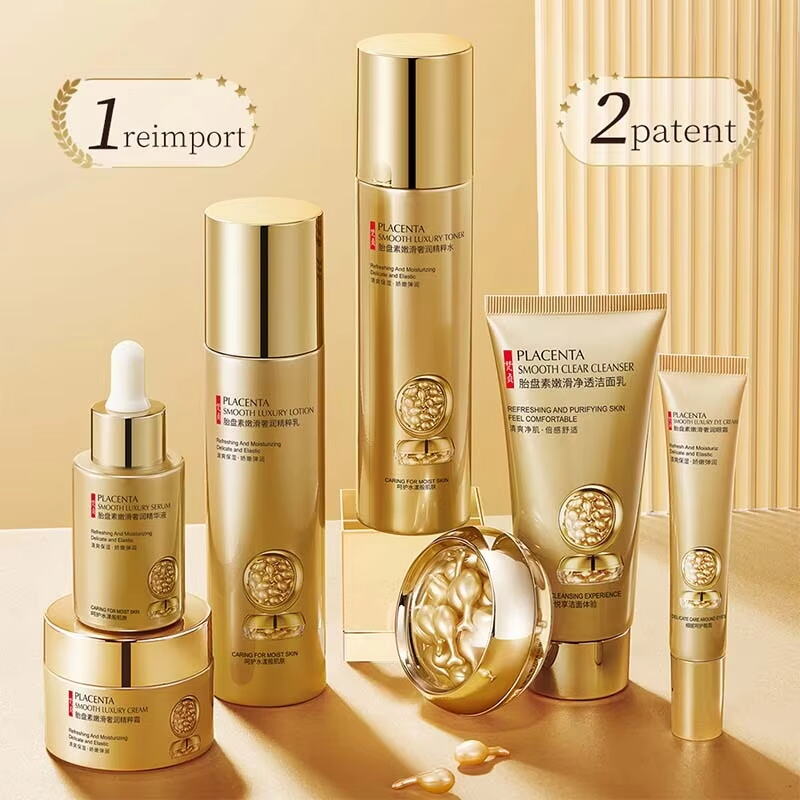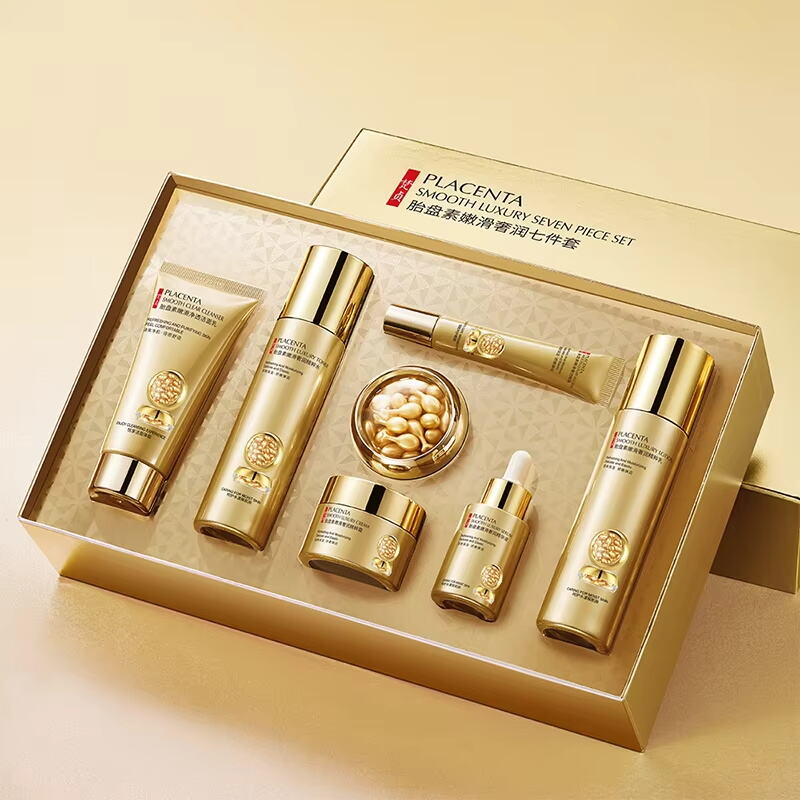Building Your Core Routine
Choosing the right skin care set lays the foundation for consistent, effective skin care. A thoughtfully assembled skin care set saves you time, reduces guesswork, and ensures products are designed to work together rather than against each other. When you invest in a skin care set, you’re buying a system—not just individual items—and that system should cover cleansing, treatment, hydration, and protection in a way that matches your skin type and lifestyle.
The Essential Cleanser and Why It Matters
Gentle cleansing as the first step
A cleanser is the cornerstone of any skin care set because it removes dirt, sebum, and environmental pollutants that otherwise block active ingredients. In a balanced skin care set, the cleanser should be gentle enough to preserve the skin’s acid mantle while still effective at removing daily residues. For oily or acne-prone skin, a foaming or gel cleanser often pairs well with the rest of the skin care set; for dry and sensitive skin, a cream or balm cleanser maintains moisture and complements hydrating products in the set.
How cleanser choice affects the rest of the set
Selecting the right cleanser within a skin care set determines how well subsequent steps perform. If the cleanser strips too much oil, humectants and treatments in the skin care set may not absorb properly. A cleanser formulated to align with the set’s intent—whether hydration, brightening, or control—ensures harmony across products and reduces the risk of irritation or conflicting interactions.

Targeted Treatment Products for Visible Results
Serums and actives that define a set’s purpose
A strong skin care set includes at least one targeted serum or treatment concentrated with active ingredients that address your primary concern: vitamin C for brightening, niacinamide for barrier support, retinoids for aging, and salicylic acid for acne. These treatments are the “engine” of the skin care set and should be selected and dosed appropriately for safety and effectiveness. When well integrated, the treatment amplifies the benefits of the other items in the set.
Layering treatments without creating conflict
Good skin care set formulations come with clear guidance on layering—how to combine actives to avoid over-exfoliation or irritation. A skin care set that includes both AHA/BHA exfoliants and retinoids should explain timing (alternate nights, buffer techniques). The set’s instructions help you get the most from actives while minimizing sensitivity.
Hydration and Moisturization: The Barrier Protectors
Choosing a moisturizer that complements the set
Every effective skin care set contains a moisturizer designed to lock in the benefits of earlier steps. Moisturizers vary by texture and profile—lightweight gels for oily skin, richer creams for dry types—but the intention is the same: reinforce the skin barrier and preserve hydration. A skin care set that matches moisturizer type to the formula’s overall approach helps maintain balance and prevents undue transepidermal water loss.
Humectants, emollients, and occlusives in the set
A well-crafted skin care set layers humectants (hyaluronic acid, glycerin), emollients (squalane, plant oils), and occlusives (beeswax, petrolatum) in the right order to maximize retention. This triad within a skin care set ensures that hydration is drawn in, surfaces are smoothed, and water is sealed in—delivering both immediate comfort and long-term barrier repair.
Sun Protection as a Non-Negotiable Component
Why SPF belongs in every set
Sun protection is the single most important anti-aging and preventative step. A skin care set that lacks an SPF recommendation is incomplete. UV exposure accelerates pigmentation, collagen breakdown, and overall aging—so a credible skin care set either includes an SPF product or explicitly pairs with one. Daily sunscreen use completes the set’s protective strategy.
Choosing the right sunscreen to pair with a set
Physical (mineral) sunscreens or chemical filters can both work, but the choice should consider skin type and compatibility with the set’s actives. A skin care set designed for sensitive or rosacea-prone skin will likely pair best with a mineral SPF, while oilier skin may benefit from lightweight, non-comedogenic chemical sunscreens. The set’s guidance on application and reapplication ensures effective protection.
Exfoliation and Masks: When and How to Use Them
Periodic tools included in a comprehensive set
Some skin care sets include a mild exfoliant or a weekly mask to accelerate cell turnover and deliver concentrated ingredients. These items are not daily essentials but are valuable extras when used correctly. A balanced skin care set indicates frequency and complementary steps to avoid excessive irritation while still reaping exfoliation’s renewal benefits.
Treatment masks for targeted boosts
A treatment mask included in a skin care set can address hydration, detox, or brightening. For example, a hydrating overnight mask paired with a daytime antioxidant serum from the same set amplifies results. The synergy between weekly treatments and daily staples is what elevates a skin care set from a collection to a regimen.
Eye and Lip Care: Small Areas, Big Impact
Specialized products for delicate zones
An effective skin care set often contains or recommends an eye product to address thin, delicate skin—hydration, de-puffing, and gentle anti-aging. Including an eye cream within the set ensures that a single regimen covers the whole face’s needs, as the eye area requires different actives and textures than the cheeks or forehead.
Lip care as part of the set’s holistic approach
Lip treatments or balms may not appear in every skin care set, but when included they underscore completeness. A well-constructed skin care set acknowledges that the perioral area is vulnerable to dryness and sun damage, and it gives simple steps to protect and repair these tissues as part of an integrated routine.
Cleansing Tools and Application Accessories That Help
Tools that improve product performance
Some skin care sets add tools—cleansing brushes, spatulas, or masks applicators—that improve hygiene and product efficacy. Including a spatula in the set prevents contamination of creams or serums, while a soft brush can enhance mechanical cleansing when used judiciously. These additions reflect thoughtful packaging and support the set’s long-term results.
The value of clear usage instructions in a set
A skin care set that includes precise, step-by-step application guidance adds real-world value. Knowing when to apply each product, the correct sequence, and timing minimizes misuse and increases consistency—two factors that multiply the set’s effectiveness.
Ingredient Transparency and Formulation Integrity
What to expect on ingredient lists
A trustworthy skin care set lists full ingredients, target concentrations for actives where relevant, and clarifies preservative systems. Ingredient transparency lets users avoid allergens and understand why the set works. The best skin care set formulations avoid unnecessary irritants like excessive fragrance and focus on stable, proven actives.
Stability, packaging, and preservative systems
Packaging in a skin care set should protect sensitive ingredients: airless pumps for vitamin C, opaque tubes for retinoids, and small ampoules for single-use boosts. Proper packaging ensures the set’s shelf life and performance, and signals that the brand considered the biochemical needs of its formulas.
Value, Cost-Per-Use, and Practical Sizing
How to assess real-world value in a set
When evaluating a skin care set, calculate cost-per-month and cost-per-use rather than only headline price. A cheaper set that requires frequent repurchase may cost more over time, while a moderately priced skin care set with concentrated actives and larger sizes may deliver better economy and results.
Avoiding over-complexity and wasted products
A skin care set should be comprehensive but not redundant. Sets that include too many overlapping serums or duplicate hydrators often create waste and confusion. A streamlined skin care set with complementary products boosts adherence and reduces product waste.
Safety, Patch Testing, and Introduction Strategy
How to introduce a new set safely
Start any new skin care set by patch testing each product on a discrete area and then introducing items one at a time. This cautious rollout ensures you can identify sensitivity without disrupting a full routine. The skin care set’s instructions should recommend a phased approach for strong actives like retinoids or acids.
Monitoring progress and adjusting use
Track hydration, redness, texture, and any breakouts when using a new skin care set. Many active-driven improvements take weeks to appear, but any sign of persistent irritation should prompt adjustment. A good skin care set provides troubleshooting advice and tips to customize frequency based on tolerance.
Sustainability, Ethics, and Long-Term Considerations
Eco-conscious packaging in a modern set
More consumers expect a skin care set to reflect sustainability—refillable containers, recyclable materials, and concentrated formulas that reduce shipping weight. A set that balances efficacy with responsibility demonstrates long-term thinking.
Ethical sourcing and cruelty-free formulations
A skin care set that avoids animal testing and sources ingredients ethically aligns with broader consumer values. Certifications and transparent supply chains in a skin care set build trust and often reflect higher formulation standards.
Customization and When to Seek Professional Advice
Personalizing a set for unique needs
A basic skin care set can be personalized with a specialist treatment added in small doses—an observation that gives flexibility. For complex concerns (severe acne, rosacea, or dermatitis), consult a dermatologist before modifying the set with potent prescription elements.
Recognizing when the set isn’t enough
If a carefully chosen skin care set does not deliver progress after a reasonable trial period, or if serious reactions develop, seek professional help. A set supports daily maintenance and mild-to-moderate concerns, but it is not a substitute for clinical-grade interventions when needed.
FAQ
What are the absolute must-have items in a skin care set?
A skin care set should include a gentle cleanser, a targeted treatment (serum), a moisturizer, and an SPF product or clear sunscreen guidance. These core items establish a daily routine that cleanses, treats, hydrates, and protects.
How long does it take to see results from a new skin care set?
Initial improvements in hydration and texture may appear within two to four weeks. For measurable changes in pigmentation, elasticity, or fine lines, expect consistent use for eight to twelve weeks.
Can I mix products from different skin care sets safely?
Mixing products from different skin care sets is possible, but do it cautiously. Check actives for conflicts (for example, avoiding simultaneous high-strength acids and retinoids) and introduce changes slowly to monitor tolerance.
Is a more expensive skin care set always better?
Not necessarily. Evaluate a skin care set for meaningful ingredient concentrations, appropriate packaging, and clear usage guidance. A mid-priced set with clinically relevant actives and proper packaging can outperform a pricier set that lacks transparency.
Table of Contents
- Building Your Core Routine
- The Essential Cleanser and Why It Matters
- Targeted Treatment Products for Visible Results
- Hydration and Moisturization: The Barrier Protectors
- Sun Protection as a Non-Negotiable Component
- Exfoliation and Masks: When and How to Use Them
- Eye and Lip Care: Small Areas, Big Impact
- Cleansing Tools and Application Accessories That Help
- Ingredient Transparency and Formulation Integrity
- Value, Cost-Per-Use, and Practical Sizing
- Safety, Patch Testing, and Introduction Strategy
- Sustainability, Ethics, and Long-Term Considerations
- Customization and When to Seek Professional Advice
- FAQ

